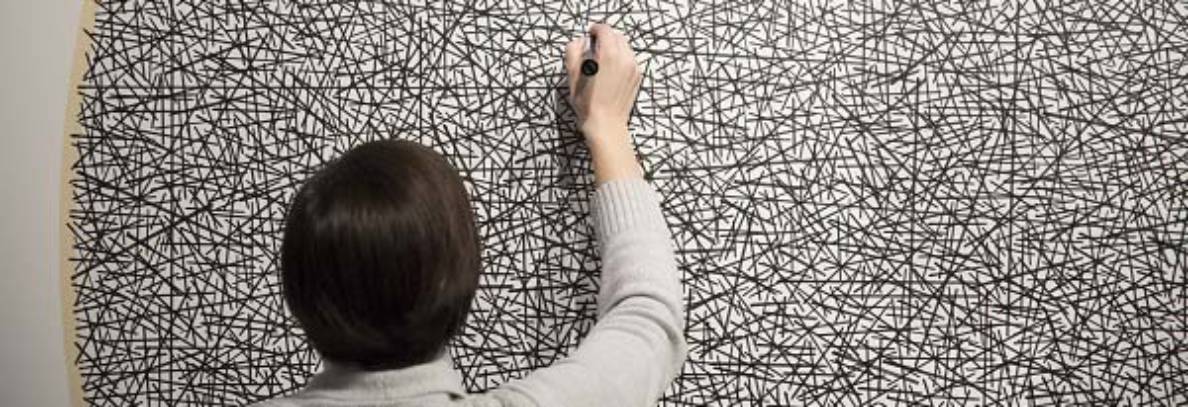Buttons: Artist multiples
Need a spare?
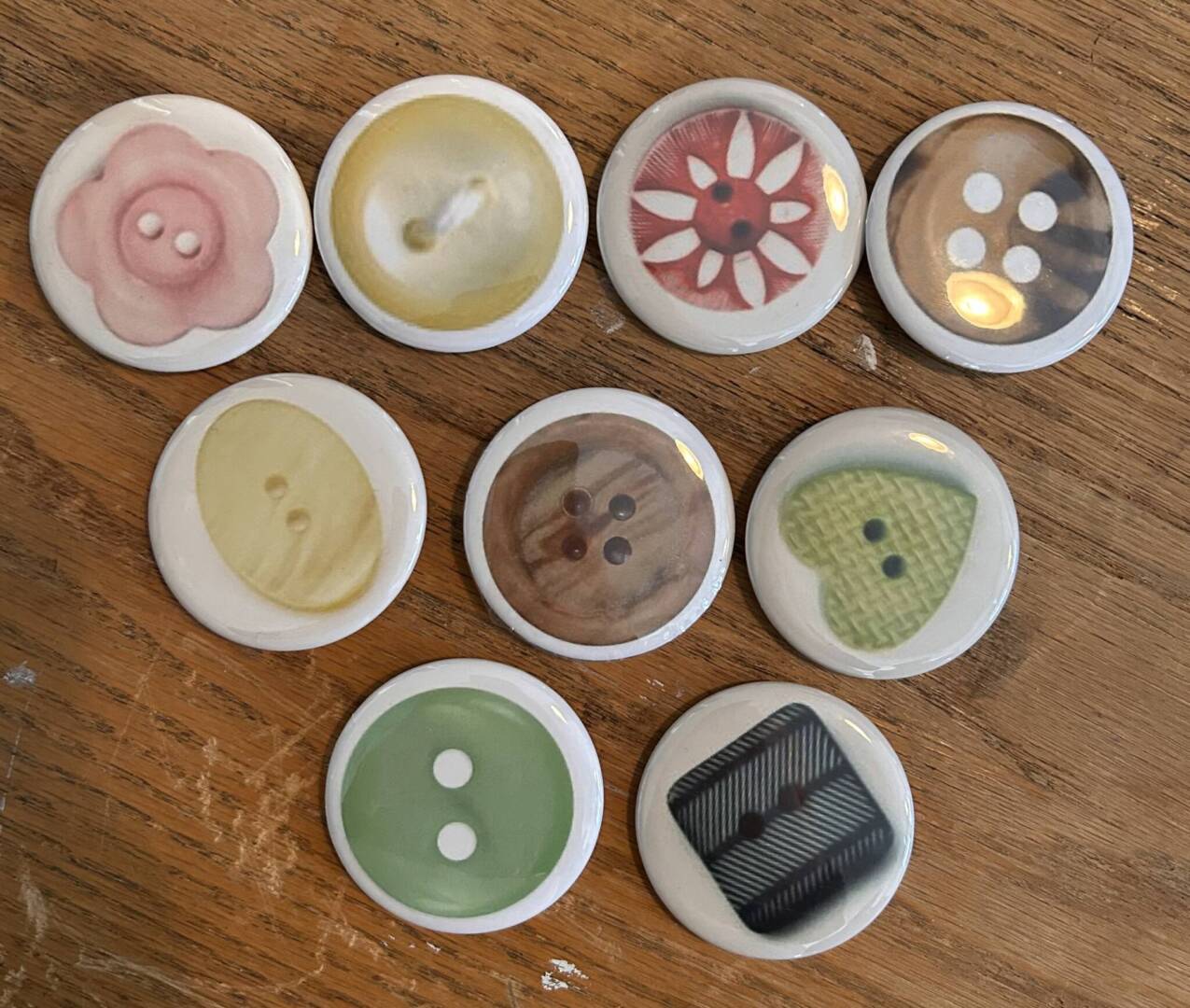
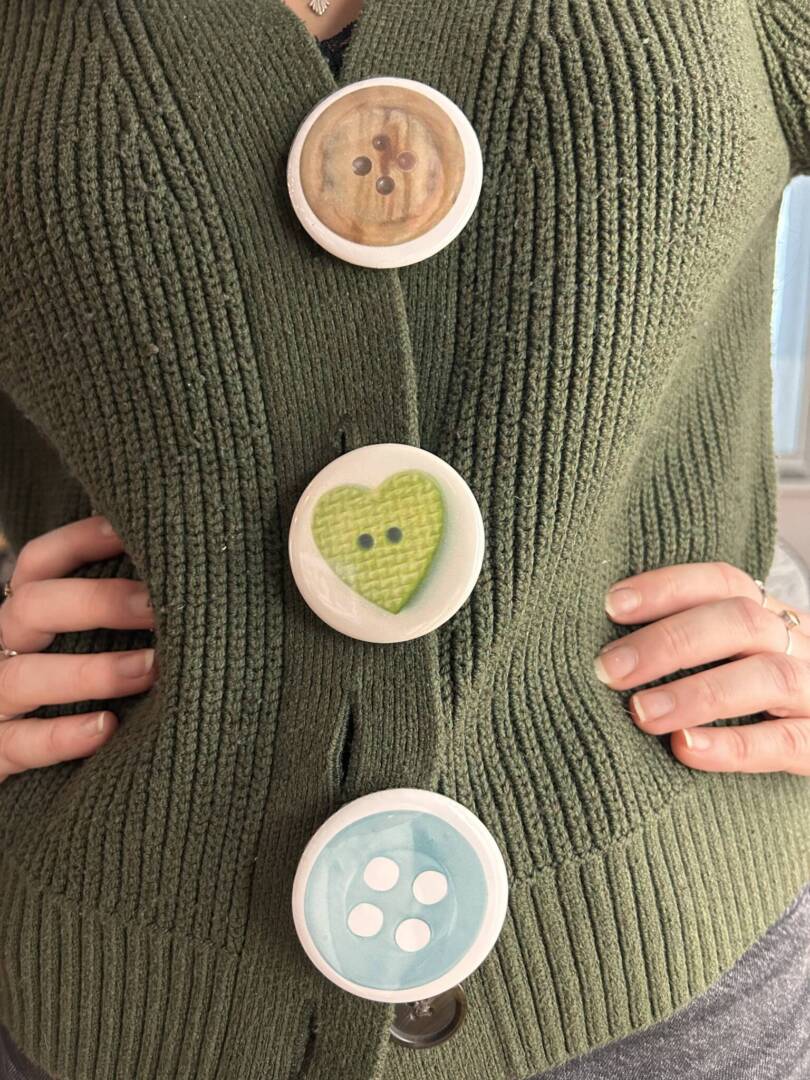
Modelled by Riya!
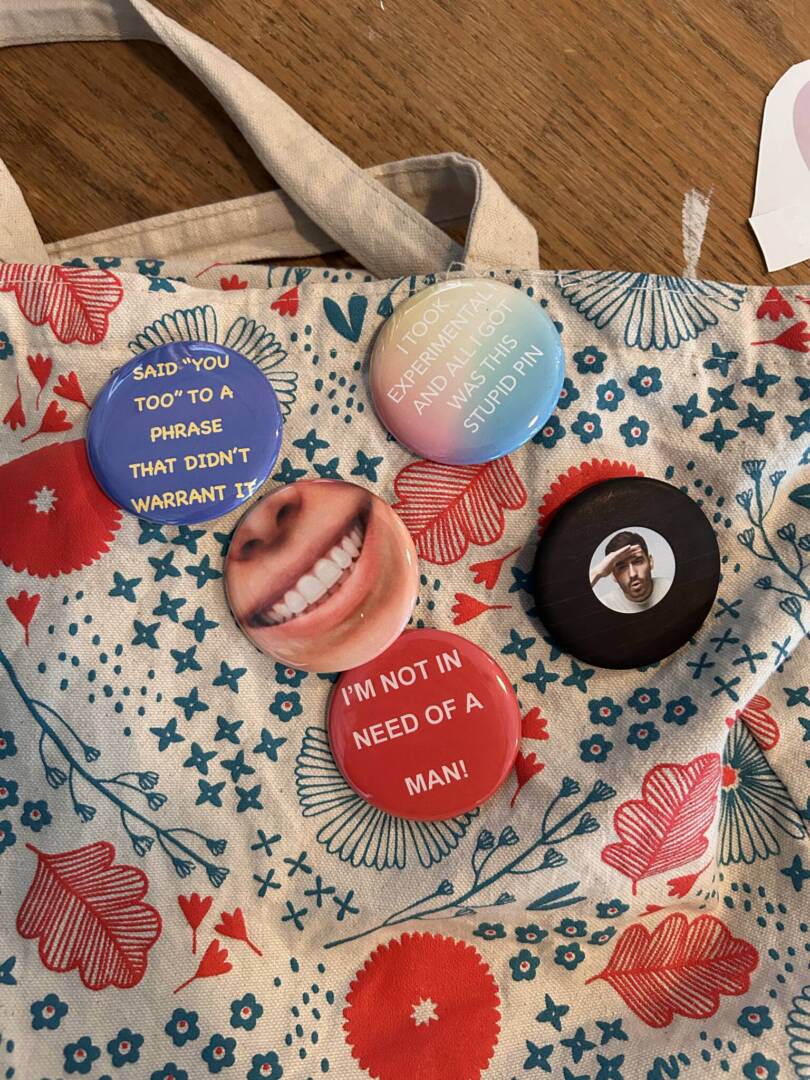
MFA Studio Tours
I found walking around the MFA studios to be incredibly inspiring. It was very cool to get to see how other artists work. Along with all of the different mediums they choose to work with. It made me wonder what type of art I would like to focus on. I always feel inspired after viewing the art of others. The artist that stuck out to me was Tuesday Troup. I really enjoy how she paints very mundane scenes while also including detailed imagery. Her work feels very sombre to me, which I enjoyed.
Ages 3-21: A Conceptual Portrait
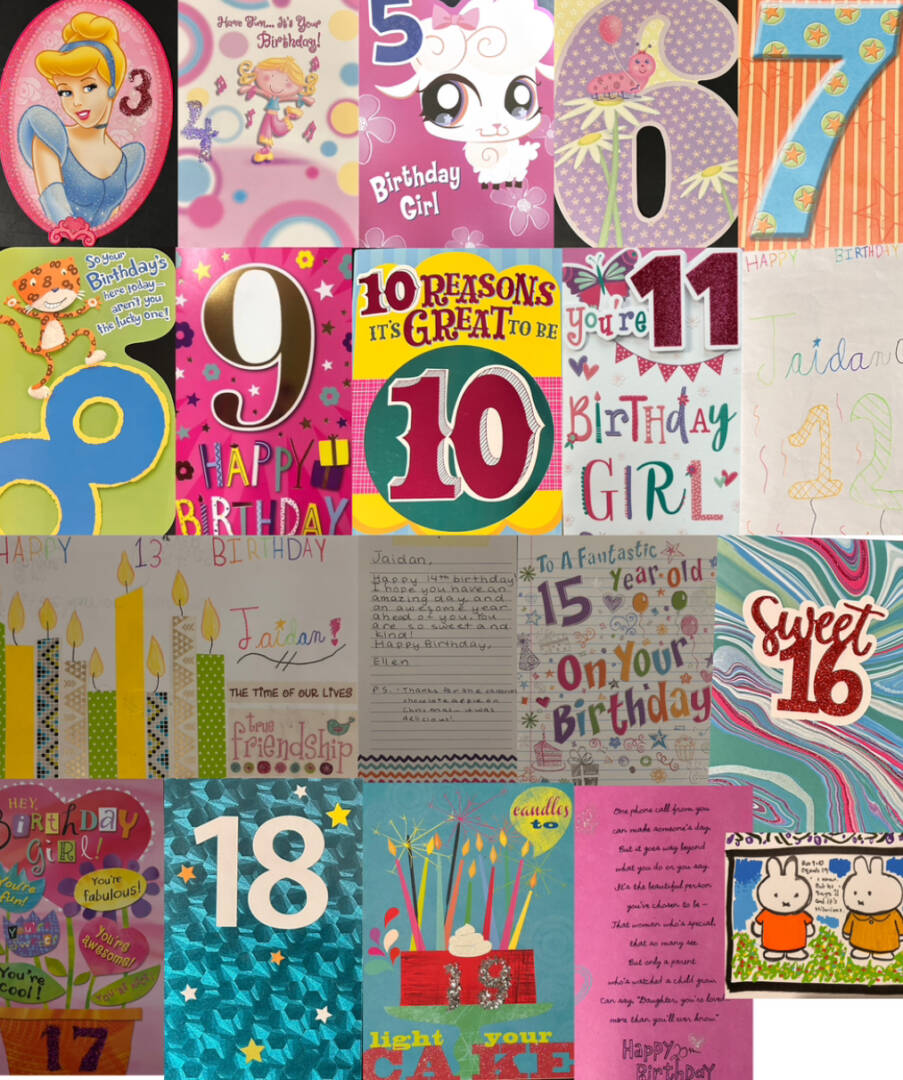
Audio Art Assignment
My Crops Are Dying But My Body Persists– Bridget Moser
Bridget Moser’s piece “My Crops Are Dying But My Body Persists” shows herself interacting with various objects throughout the video. The colours in this performance remain monochromatic. The beginning of the video shows display of fake nails and human teeth. It then cuts to a mouthpiece intended to shape the face by tightening the jaw muscles. This reminded me of all the various products we’re sold to make ourselves look better. A lot of these products seems ridiculous and do not have enough proof that they actually work. This is a very prevalent topic at the moment. Social media platforms often promote these products to keep up with the constantly changing beauty standards. They only exist to sell more.
The objects that can be seen in the video remind me of something you might find in Homesense or on Amazon. The ceramics in these scenes are gold and white, which makes them seem void of any expression. I couldn’t imagine where in a home a golden balloon animal would look good. This is a commentary on how consumerism makes us feel void of any life. The entire performance feels existential, as if something big is going to happen and then it never does. The artist is aware that all of these products will eventually end up in a landfill, and that our consumerist society is slowly killing the planet. But what is there to do besides continue living? She expresses how lonely it all feels, and how she struggles to make anything worth it.
One Feat, Three Ways
The One Shot
The Sequence
The Loop
Our first idea started with our one shot. We decided to make our gesture “pouring tea” and our feat “what happens when you do not have a tea cup?”. We then decided that I would pour tea on Amelias head. We thought it would be a good idea to have her hold a tea cup. It makes the viewer expect that that’s where the tea is going, then it ends up completely missing the cup.
Our sequence was inspired by our one shot. We both decided that we would find random objects around the house to bring to the studio. We did not discuss what either of us would be bringing, which led to an assortment of different objects. We then poured the tea into each item. This was the most difficult to film because we kept laughing. It is also my personal favourite. The sound of each object really adds to the ambiance and the awkwardness.
Our loop was our final idea. We took two tea cups and put a hole in the bottom of each. We did this by taking a screw driver to hit the bottom, hoping it would break in the right place. We then took a tea pot a poured the tea into both cups. The intention was to make it look like a continuous waterfall.
AGO and Power Plant trip
They have They Can’t, Alvaro Barrington

This work is based off Tupac Shakur’s song “Keep Ya Head Up”. In this song he says “They got money for wars, but can’t feed the poor”. This can be seen sewn on the work in yarn. The work is meant to highlight racism and sexism faced by the black community. It also connects both capitalism and war and the ways that it harms marginalized groups. These words really stood out to me when I first saw them in the gallery. I believe that the connection between poverty and war is extremely prevalent right now. Poverty and homelessness is currently worldwide issue, along with governments funding war. We know that global issues are usually worse for marginalized groups. It shows how this issue has not changed over time. Tupac’s song was released 30 years ago and the words still remain relevant.
Story, Robert Rauschenburg
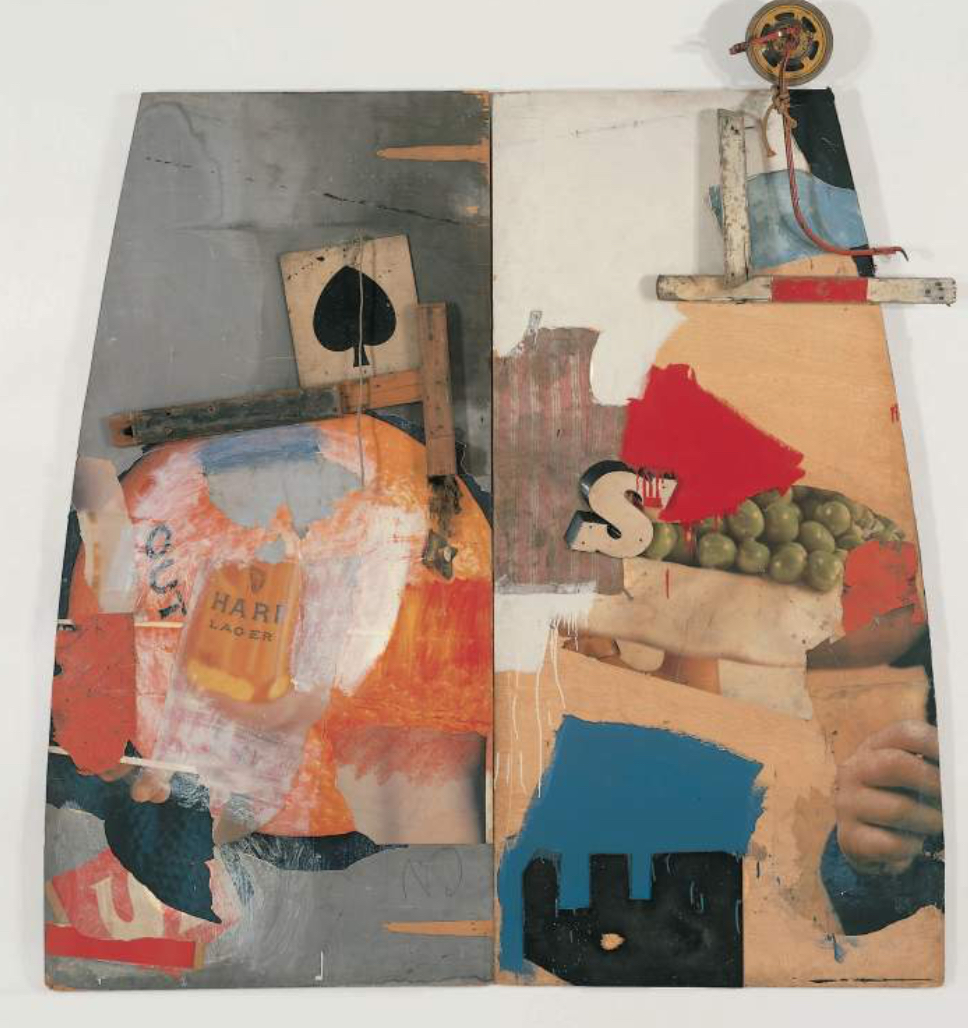
Another piece that caught my eye was Story by Robert Rauschenberg. This was a mixed media piece on panel. The piece is a collage of printed paper, wood, metal and wood panels. What initially caught my attention about this piece was how tall it was, along with the weird shape of it. It had a collage aspect to it that made me wonder why he chose these specific images. I found myself staring at it for a period of time to try to make sense of it. I enjoyed that the piece had me asking questions about why the artist made it.
Floating Sea Palace, Lap-Sea Lam
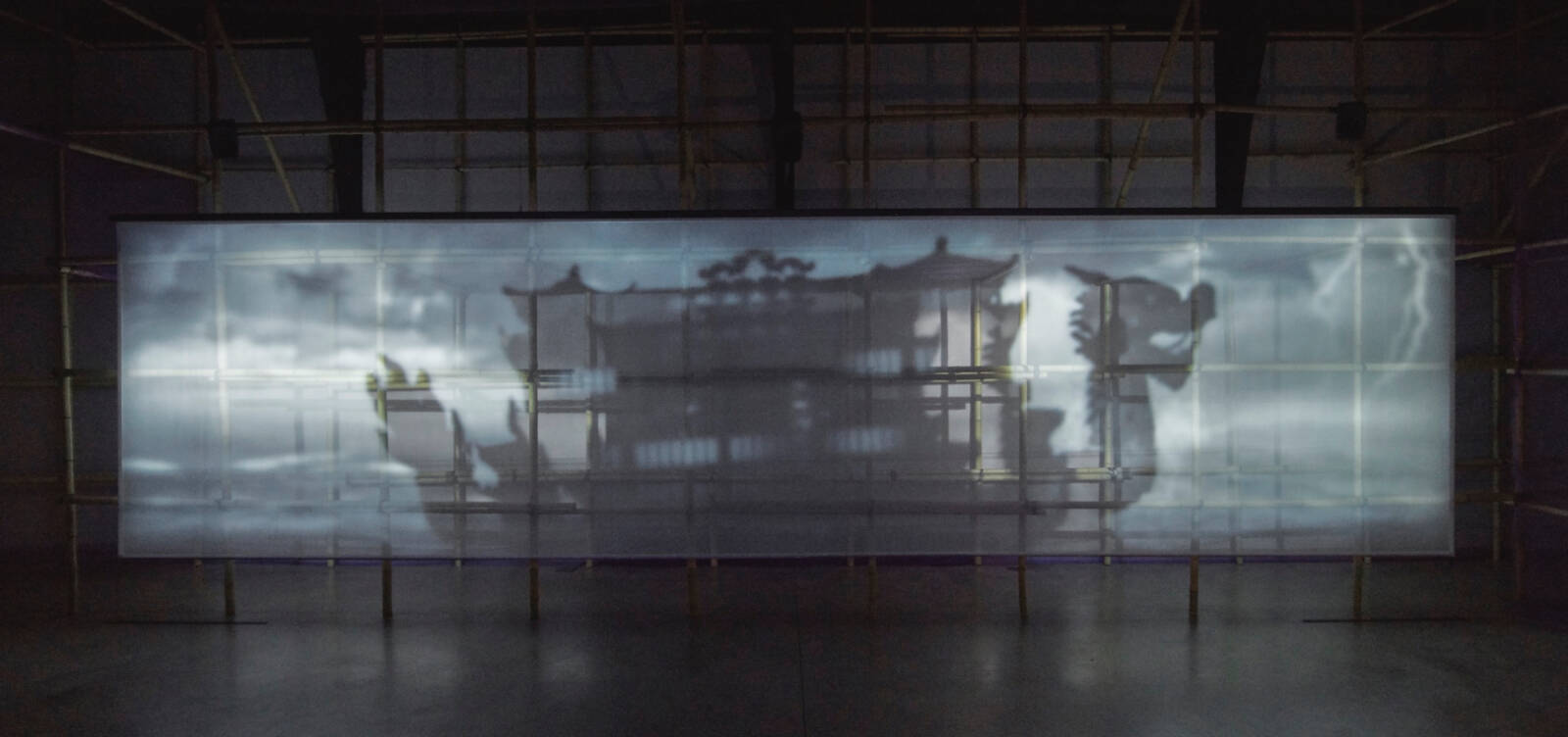
The first exhibit I viewed at the Power Plant was Lap-See Lam, Floating Sea Palace. I found this piece incredibly interesting, and weird in a lot of ways. I found myself paying close attention to what the story was trying to say. This made the time pass by quick, I was shocked that the performance was almost 30 minutes in length. The scaffolding that encompassed the room gave the video an interesting effect. It was almost as if you could see through the screen.
How Many Colours Has The Sea, Charles Campbell

In the power plant there was four MP3 players and four headphones. They played a ten minute meditation that had the listener reflect on something they had lost in their life. I found this incredibly relaxing, especially since the work was tucked away in a dark corner with bean bags provided. Across from it you could see Charles Campbell’s exhibit How Many Colours Has The Sea. Accompanying the piece was audio of the sea. I found this exhibit very immersive.
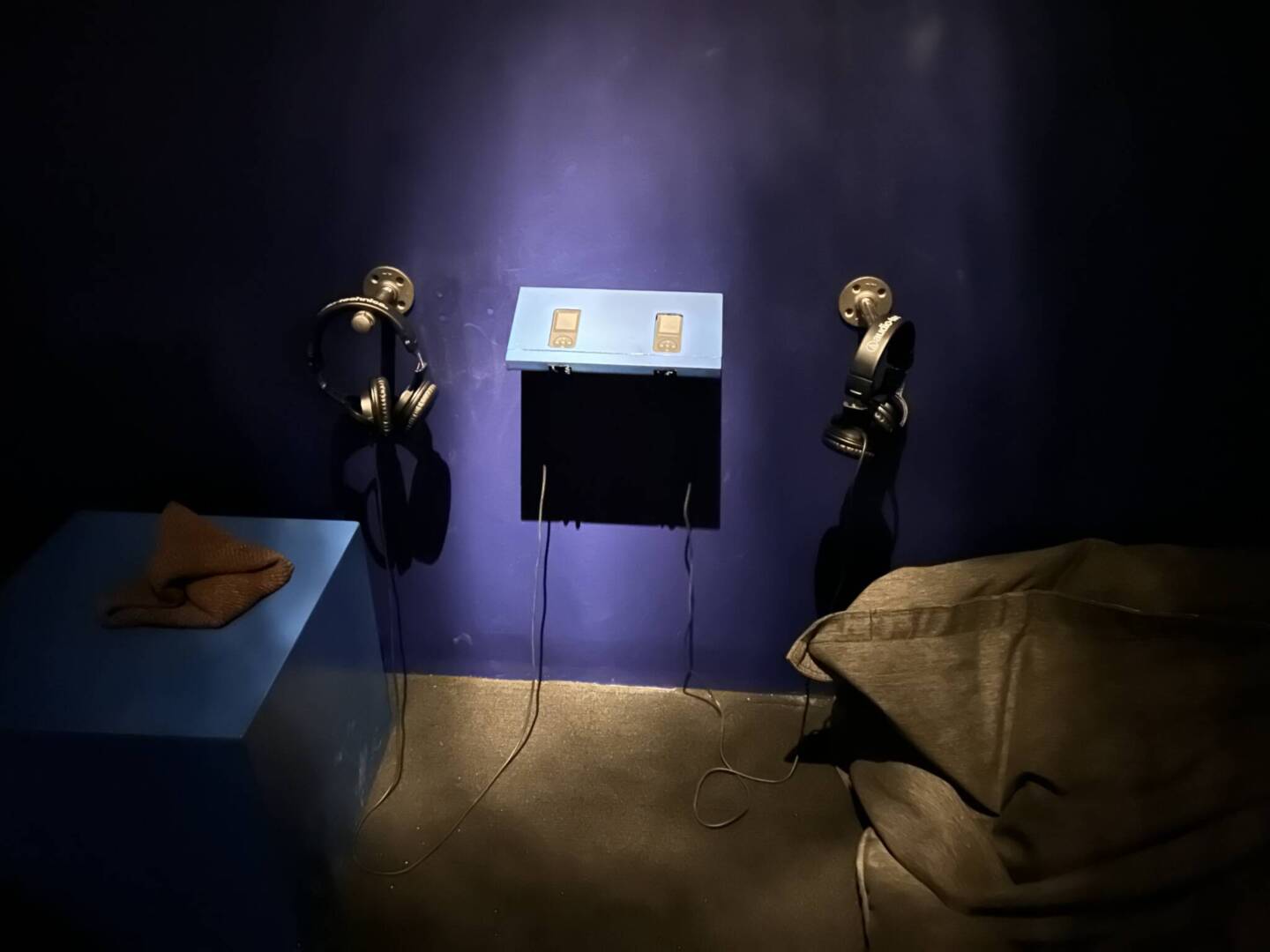
The Gestures of Everyday Life Into Art by Katja Heitmann
This article depicts the work of the choreographer Katja Heitmann. She invited a series of individuals to demonstrate a daily habitual movement. She then had a group of 10 dancers mimic these unique gestures. The idea was to keep the movements alive. This piece aims to keep an “archive” of what makes us human, stepping away from the digital world. A challenge that comes up in the article is when the dancers are attempting to mimic the volunteers actions. It was noted that the volunteer would often correct themselves, but over time, would become more open. The privacy of the interviews helped the volunteers to be more open about themselves. This gave the choreography a better sense of authenticity.
A movement that I found interesting was the “anxiety hands” of Stijn van den Broek. He mentioned that seeing someone mimic his behaviour “looked less elegant” than he thought. But this experience also gave him ownership of this action. What interests me about this is that he claimed something about himself that he thought might be embarrassing. It gave him a new sense of himself, reclaiming a new meaning. It was probably something he never considered. It made me wonder about all of the nervous things that I might do that go unnoticed from myself.
The first habitual movement that comes to mind is one of my dads. Ive noticed, for my entire life, that he often bounces his leg. This movement may imply anxiousness, but I believe that it is a more unconscious movement. Ive noticed myself picking up on this habit over time. Another movement that comes to mind is when my boyfriend will purse his lips when telling a joke. This seems like an unconscious movement and I am unaware if there are any reasons for it. The final movement I would like to discuss is how my cousin will stand in a way with his chest puffed out. Along with this, he pushes his shoulders back. This has become a joke within our family, anyone who stands beside him will often mimic this movement. Which reminds me of this art piece.
For my kilometre I took ten videos of olympians running the 100 metre.
